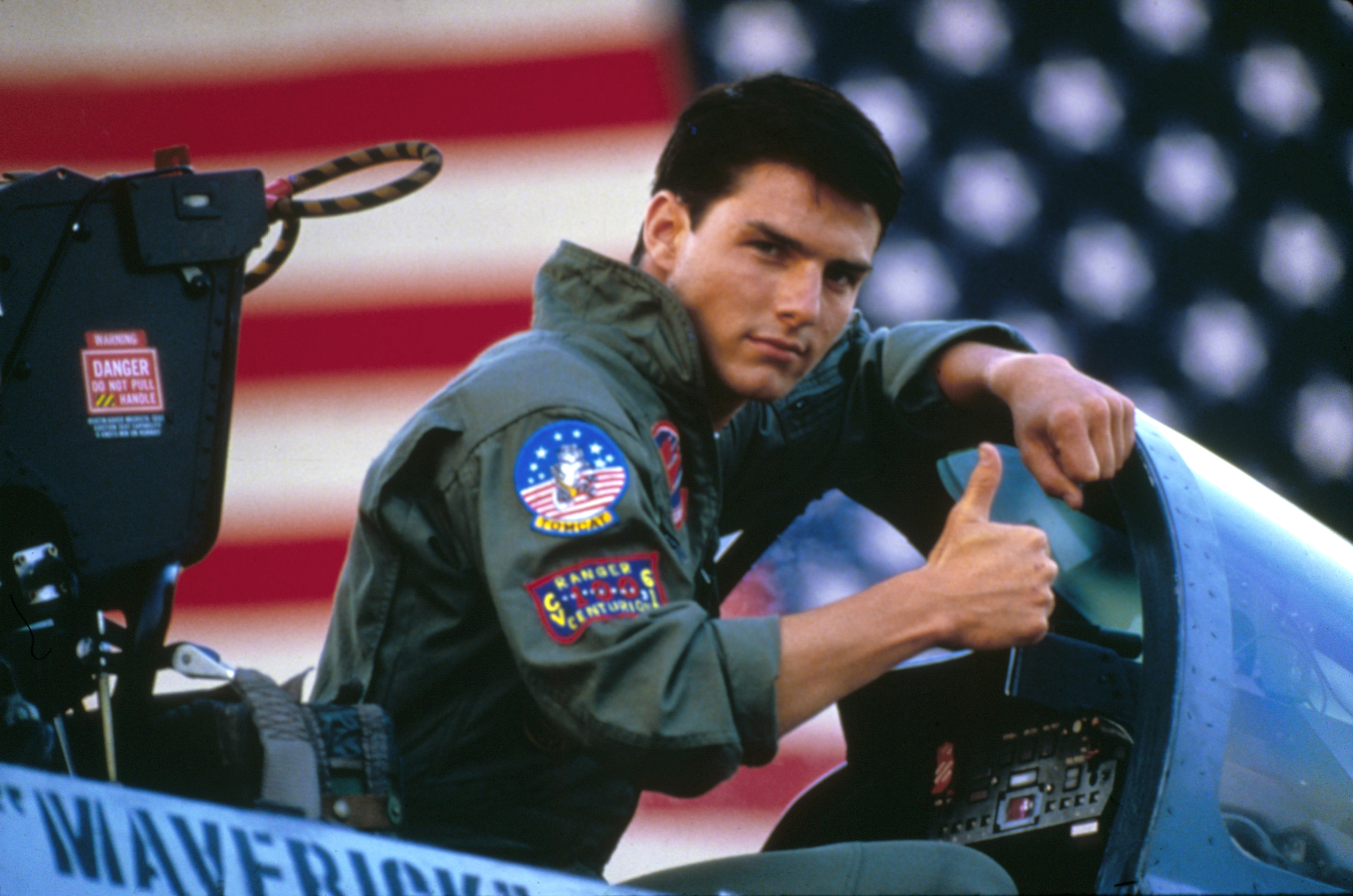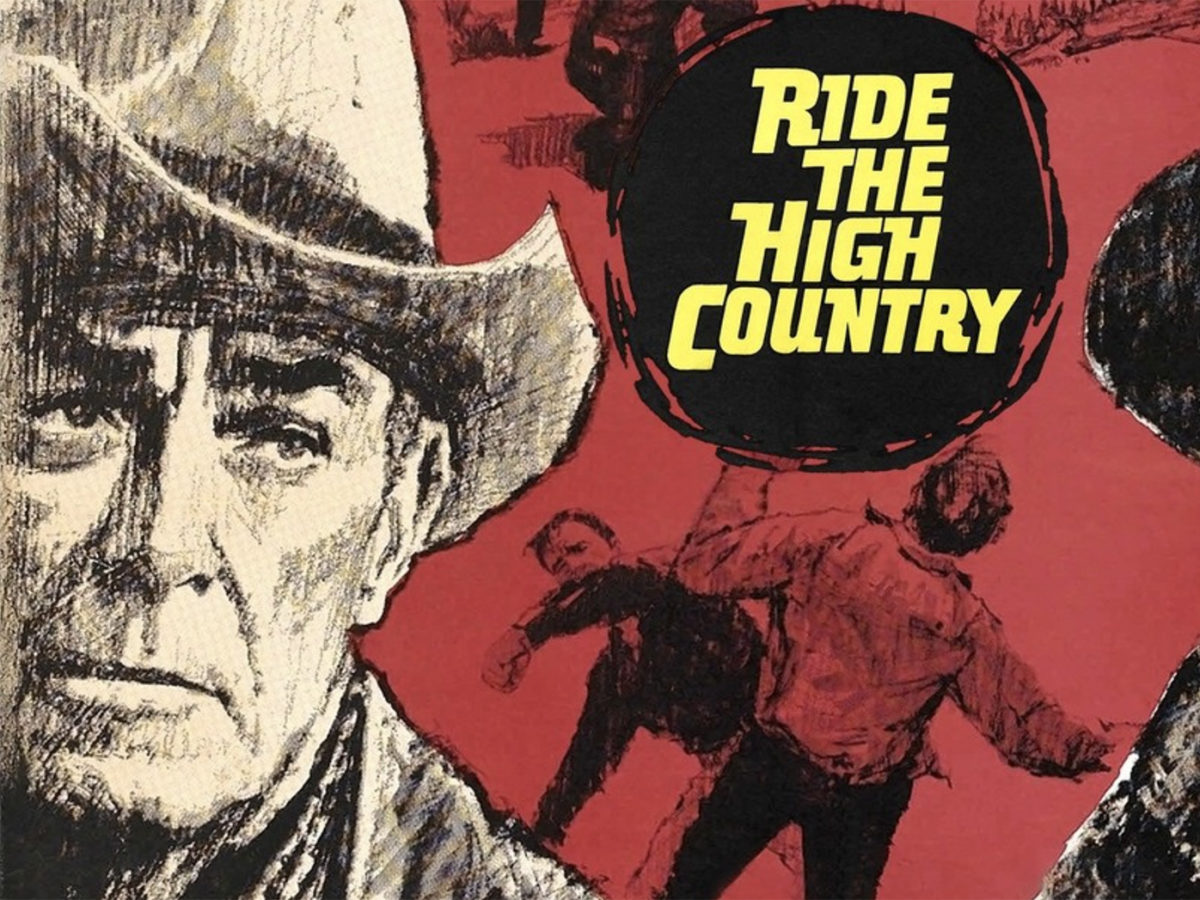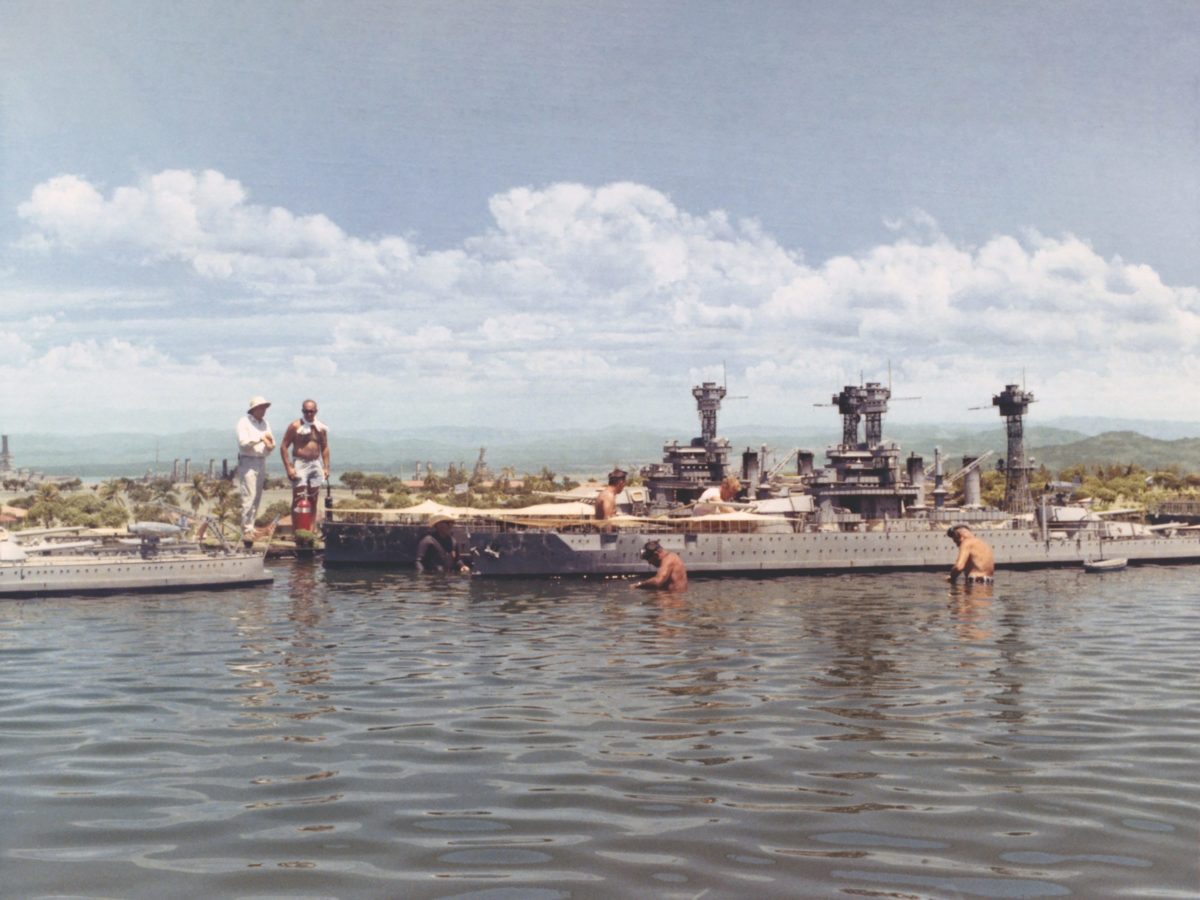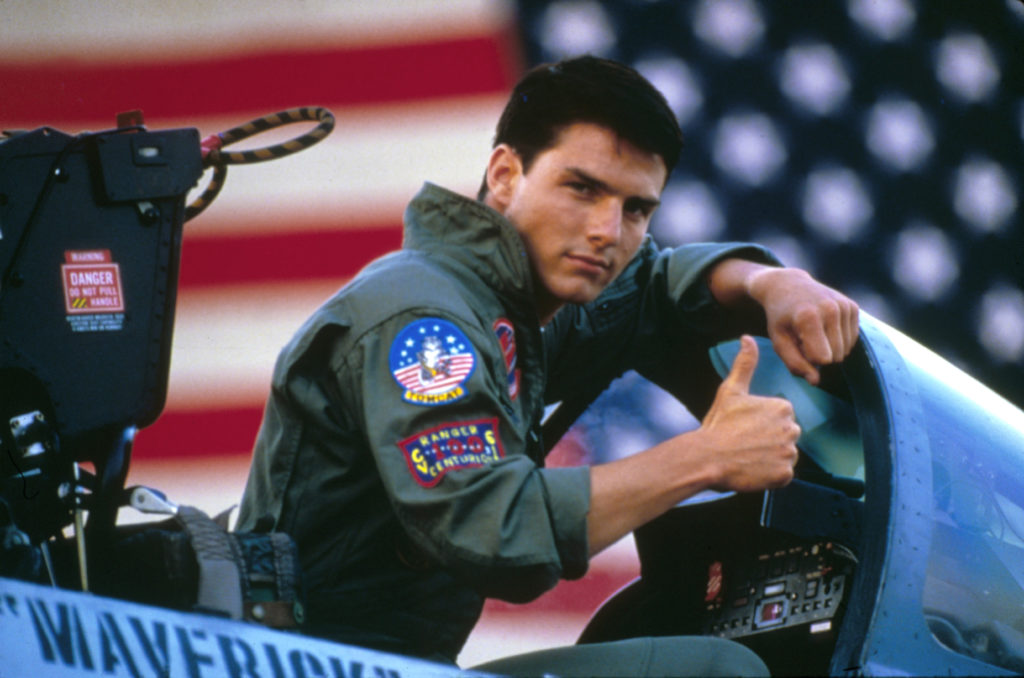In a very happy coincidence, the airplane and the motion picture came into their own at roughly the same time. The significance of the Dec. 17, 1903, Wright brothers’ flight is paralleled in film history by the advent of two famous cinematic productions, “A Trip to the Moon” in 1902 and “The Great Train Robbery” in 1903. If you’re willing to stretch your definitions a bit, “A Trip to the Moon” might even be construed as an aviation film, though it definitely would not make most people’s 10 best — or 10 worst — lists.
Picking such a list is entirely subjective, of course, not only as a matter of taste but as a matter of background, your age when you first saw a film, your ability to suspend disbelief and your willingness not to be too picky about technical details. I’ve had the excellent help of some experts in the field in putting together my own list, including author Barrett Tillman (B.T.); editor, publisher and distinguished film critic David Hogan (D.H.); and inimitable Jeopardy! player, writer and industry champion Jeff Rhodes (J.R.). All the choices listed here are my own, but I’ll also include my collaborators’ insightful comments, attributed by means of their initials.
On the whole, most of us might confess to being too picky. We’re upset when warplane markings are not correct for the period, and we get downright angry when those blasted three Douglas SBDs are portrayed once again as Japanese dive bombers. Perhaps not surprisingly, we are not so picky with films about other subjects. Most of us can watch a film about medical procedures or courtroom protocol and never see the glaring inaccuracies that leap to the eyes of doctors or lawyers.
“While it will offend many, my first choice for worst aviation film ever is ‘Top GUN,’ starring the man who needed the biggest pillow available to reach the controls, Tom Cruise.”
For this article, I have set some ground rules for myself in evaluating both the selections and the rationale for selection of the 10 best and 10 worst aviation films ever made. They are:
- Taking into consideration when the film was made.
- Not being too stuffy about minor technical errors.
- Not letting a saccharine story line get you down, even if June Allyson cries more than she usually does.
- Attempting to evaluate the film as a story rather than as merely a medium to show aircraft.
- Going with my gut feeling (probably the most important).
- Making sure it deals with World War I (just kidding — maybe).
Recommended for you
You’ll note there’s no mention of the current blessing or blight, depending upon your point of view, of using computer-generated imagery. We have to admit that it has come a long way, even if the artists involved ignore such things as turn rates, acceleration, speeds and so on. There is no question that the 9-G turns at street level in “Pearl Harbor” were hard to swallow. And while we may not be happy with the torturous story line of “Flyboys” (and could they have picked a more insulting title?), you must admit that seeing Gothas in flight is remarkable even as CGI. And so were the images of the zeppelin, especially the sequential explosion of its gas bags. So for the purposes of this article, let us forgive them their CGI errors, and bless them for what they offer in images that are otherwise totally unavailable.
The Best Aviation movies of all Time
1. ‘Those Magnificent Men in Their Flying Machines’ (1965)
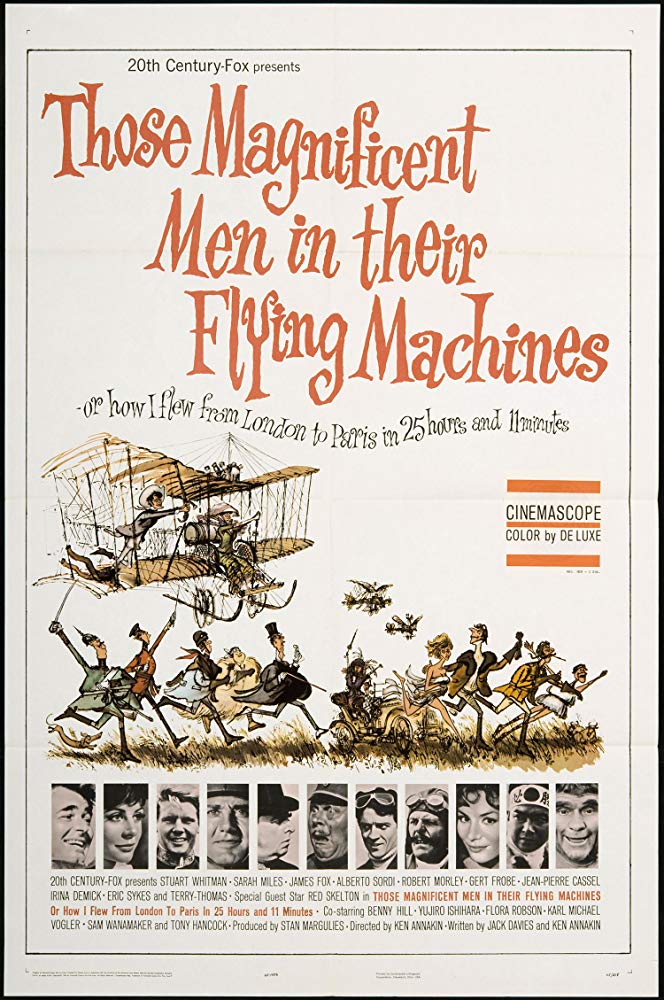
This good-humored romp has it all, with wonderful replicas of both successful and unsuccessful early flying machines, beautiful scenery and a great cast that includes Terry Thomas, Sarah Miles and Irina Demick as Brigitte, Ingrid, Marlene, Françoise, Yvette and Betty. Each of Demick’s characters is gorgeous, dutifully surprised and wonderfully willing. Even though the replica aircraft had more reliable power plants and were better built than the originals, they were still challenging to fly, and they nicely convey just how magnificent flying truly was in the first decade of flight.
GET HISTORY’S GREATEST TALES—RIGHT IN YOUR INBOX
Subscribe to our HistoryNet Now! newsletter for the best of the past, delivered every Monday and Thursday.
2. ‘Twelve O’Clock High’ (1949)
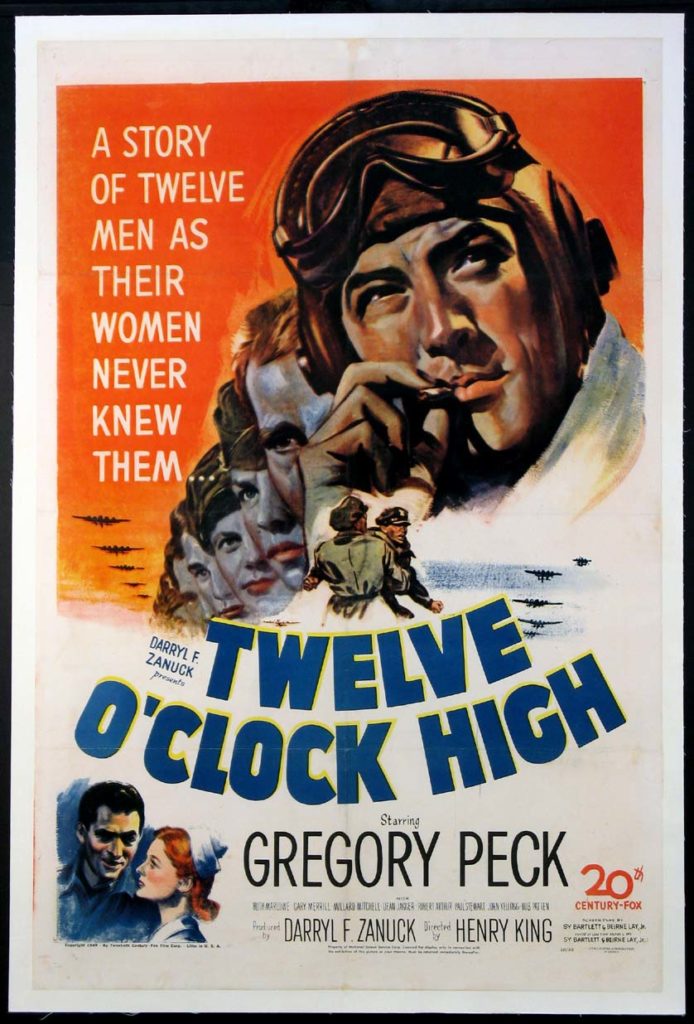
Written in part by Beirne Lay Jr., this epic reflects both his love of the U.S. Army Air Forces and his firsthand knowledge of the real events upon which the film is based. Gregory Peck, always a reliable performer, is at his best in this film, which takes advantage of still available B-17s and extensive combat footage to make the flight scenes very realistic.
“Twelve O’Clock High” is of course about leadership and command more than it is about airplanes, and as such it could serve today as both a military and a corporate training vehicle. Mercifully, the screenwriters did not feel the need to interject the usual mandatory love interest, and the film benefits greatly from this. D.H. rightly says, “The only other one that comes close (and indeed it comes pretty close) is ‘Command Decision’ (with Clark Gable, Walter Pidgeon, Charles Bickford, Van Johnson, Brian Donlevy, John Hodiak and Cameron Mitchell — wow!).
3. ‘Wings’ (1927)
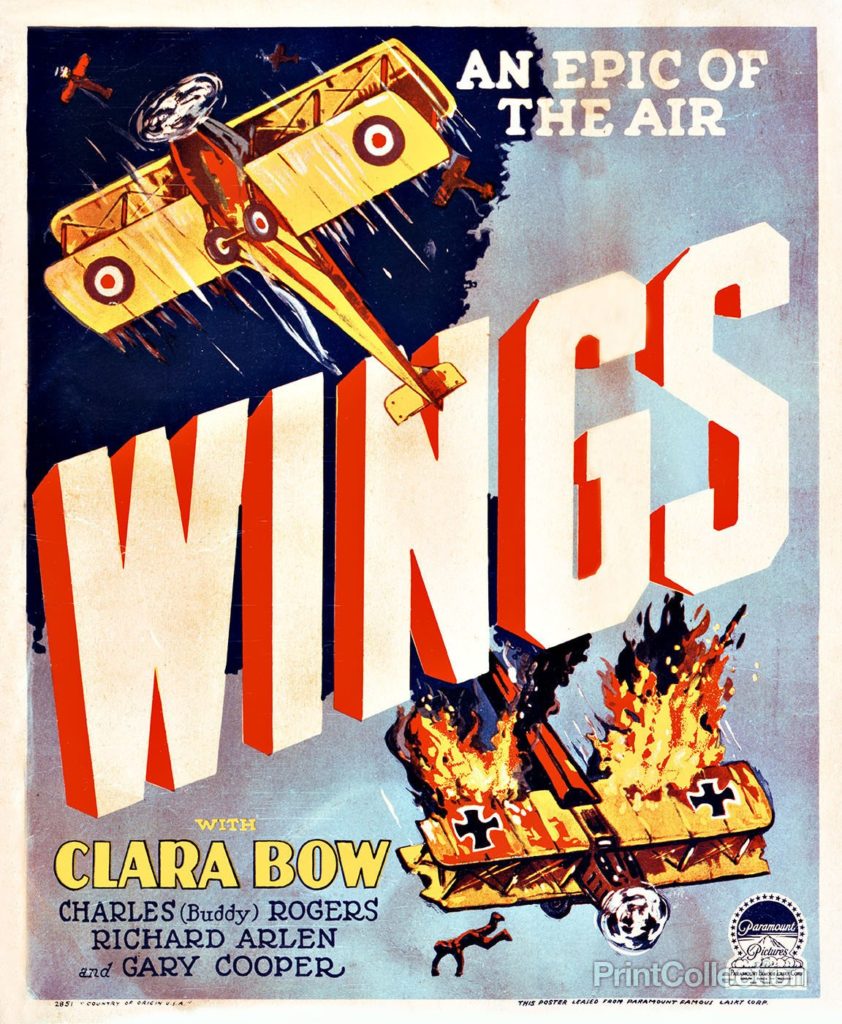
Wings was awarded the first-ever Best Picture Oscar in 1929, a salute to its director William Wellman, a former member of the Lafayette Flying Corps. Wellman had flown in France with the same Tommy Hitchcock who one war later saw the potential of the Merlin engine to power the P-51 Mustang. Wellman also served briefly after the war with the U.S. Army Air Corps. He got a job in Hollywood as a messenger, and quickly worked his way up to director.
Wellman’s reputation and contacts were enough to persuade the Air Corps to furnish a virtual armada of more than 220 aircraft for the picture. These include Thomas Morse MB-3A Scouts, Curtiss P-1 Hawks, Martin MB-2s and de Havilland D.H.4s. A few World War I aircraft, including a Spad VII, a Fokker D.VII and an S.E.5a, also make appearances.
In contrast to “Twelve O’Clock High”, the film features a typically goofy love story of the time, a triangle between Buddy Rogers, Richard Arlen and the inimitable Clara Bow. Interestingly enough, Wellman, writer F.J. Saunders, Arlen and Rogers were all pilots. I’m told that Bow had other interests. D.H. comments that “The love triangle is well played: It’s tongue in cheek and a little bit understated, and you just can’t beat Clara Bow. In real life she was a very frightened, unhappy woman, but she remains a luminous screen presence, and a good actress, too.” B.T. notes that in one scene Rogers is clearly shown flying a Thomas Morse. Wow! It was very unusual for a star’s life to be risked in such a manner.
4. ‘Hell’s Angels’ (1930)
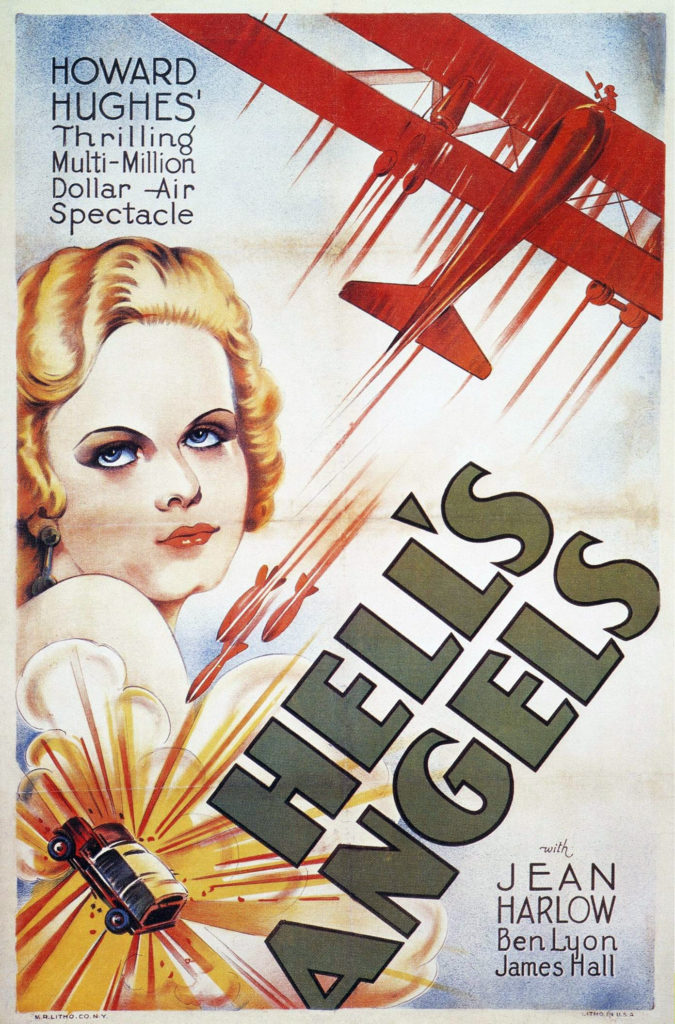
Good acting isn’t everything, not if you can marshal the number of genuine World War I aircraft Howard Hughes used to produce this extravaganza. He also went to great lengths to make contemporary aircraft look enough like the real thing when flown in formation or lined up for takeoff, even making over a Curtiss Jenny to resemble an Avro 504. Only a relatively small percentage of this film deals with aviation, but that little bit is remarkable. The studio work done with the zeppelin is amazing, better than many of today’s special effects. The monumental dogfight scenes were incorporated in dozens of other films and are still stolen today for use in documentaries. So despite its many faults (terrible acting, bad story line, not enough flying scenes), this is an inevitable choice for the top 10. (As an aside, the best part of the more recent film “The Aviator” was the segment devoted to Hughes’ making “Hell’s Angels.”)
D.H. says that the dogfight and zeppelin scenes are great — “Plus you get the immortal Jean Harlow (in two-strip Technicolor, no less). She hadn’t yet learned how to act (she mostly strikes poses), but her flesh impact is overpowering.”
5. ‘Strategic Air Command’ (1955)
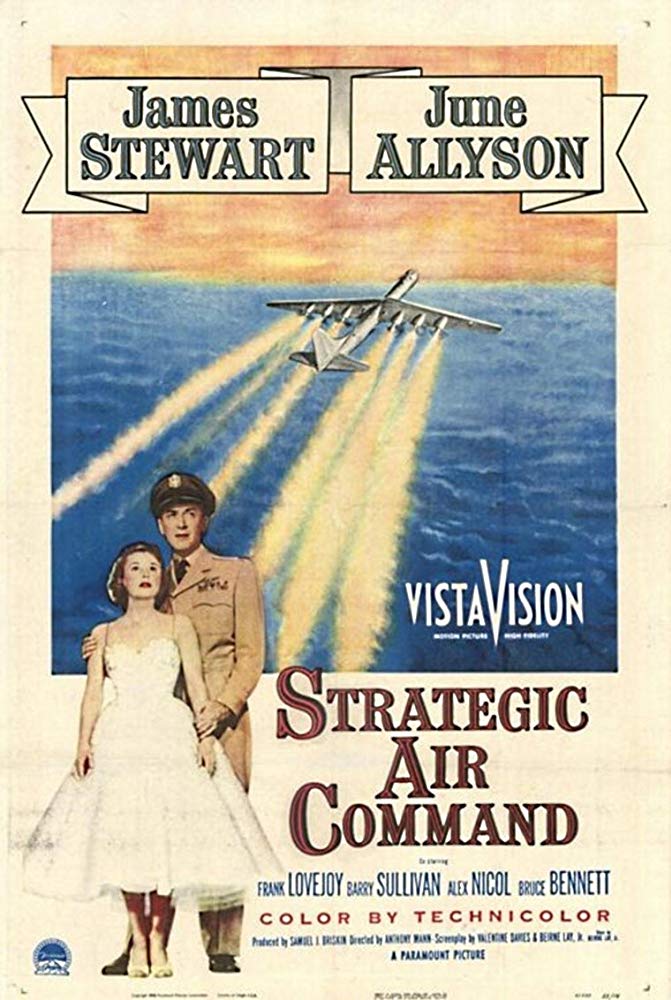
The aerial shots of the Convair B-36 and Boeing B-47 in “Strategic Air Command” are perhaps the most beautiful ever filmed. They expertly convey the majesty of flight as summoned by those two remarkable aircraft. Jimmy Stewart is especially good in the scenes where he is purportedly flying the aircraft. His realistic manner — with no drastic movements of the control yoke, no dead-ahead stare, no wandering gaze — tells you he is an experienced pilot. He sits and scans the instruments, making small incremental corrections — showing he knows exactly what he is doing.
The story and screenplay by Beirne Lay is adequate except that it provides an opportunity for the always teary-eyed June Allyson to give her usual irritating impression of a wife who doesn’t get it about her husband’s love of flying. My ranking of this movie among the top 10 rests primarily on its aerial photography and only secondarily on its story about the dedication of the members of SAC.
6. ‘The Blue Max‘ (1966)
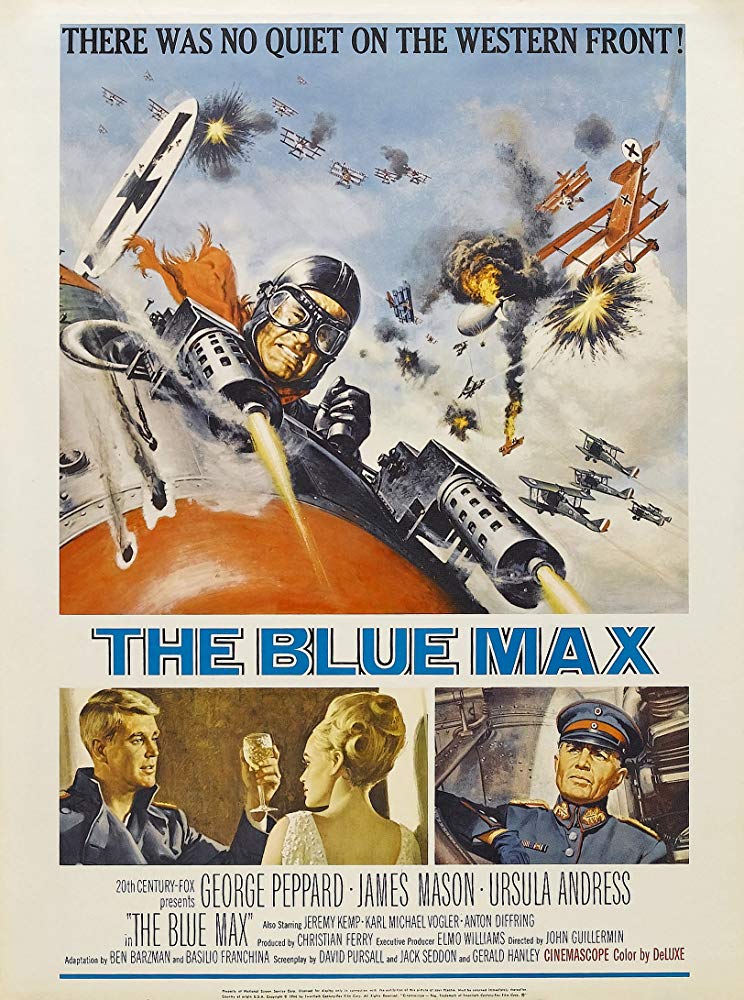
What, another WWI movie? Well yes, I grew up on these, and can tell you that nothing was more welcome than the arrival of “The Blue Max,” the first (to my knowledge) WWI aviation film made in color. We owe a lot to Jack Hunter, author of the novel on which the film is based, who died this past year.
The replicas built for the film are adequate — let’s face it, seeing any Pfalz in flight is worthwhile. The cinematography is superb. George Peppard plays his usual stone-faced self, but there is Ursula Andress to compensate.
The story line has an interesting twist—the aristocrats versus the plebes in a German fighter squadron. As we know, many German fighter pilots were not commissioned, so it must have been Peppard’s personality that brought down Willi von Klugerman’s (Jeremy Kemp’s) disdain. D.H. is, as usual, more charitable than I, pointing out that Peppard “was always good at projecting haughtiness (see him as the all-but-in-name Howard Hughes, building his aviation empire, in ‘The Carpetbaggers’).”
7. ‘Battle of Britain‘ (1969)
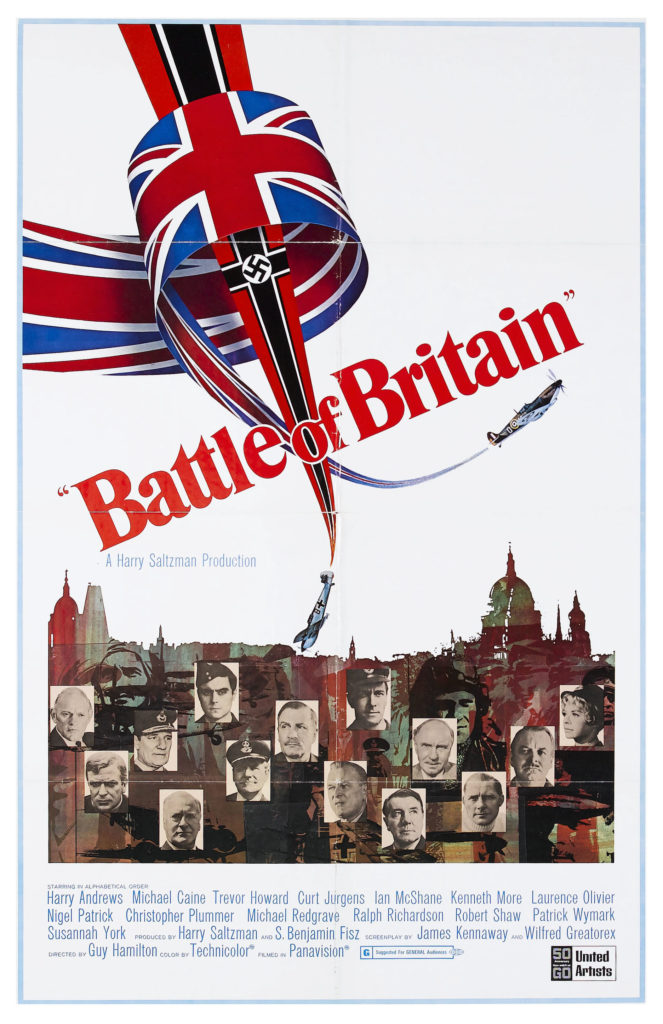
The massive effort to gather the requisite number of Hurricanes, Messerschmitts, Spitfires and Heinkels was well worthwhile, and the special effects are not bad for the time. All aficionados know that the Messerschmitts and Heinkels were ex–Spanish air force, powered by Merlin engines, but it doesn’t bother anyone. The cast of characters is spectacular, and the producers had the good taste and good sense to cast Laurence Olivier as Air Chief Marshal Sir Hugh Dowding. Susannah York is thrown in as a good-looking, worthwhile addition. The plot line is derived from an excellent book of the time, “The Narrow Margin.”
The ground scenes were filmed at Duxford, contributing to the general realism of the effort. They actually burned down a World War II hangar for the film — that’s getting a little too realistic. BT adds, “When I was at Duxford in 1991, there was a plaque on the site of the former hangar, saying that it had regrettably been blown up during the filming of a motion picture!”
8. ‘The Dam Busters’ (1955) and ‘633 Squadron’ (1964)
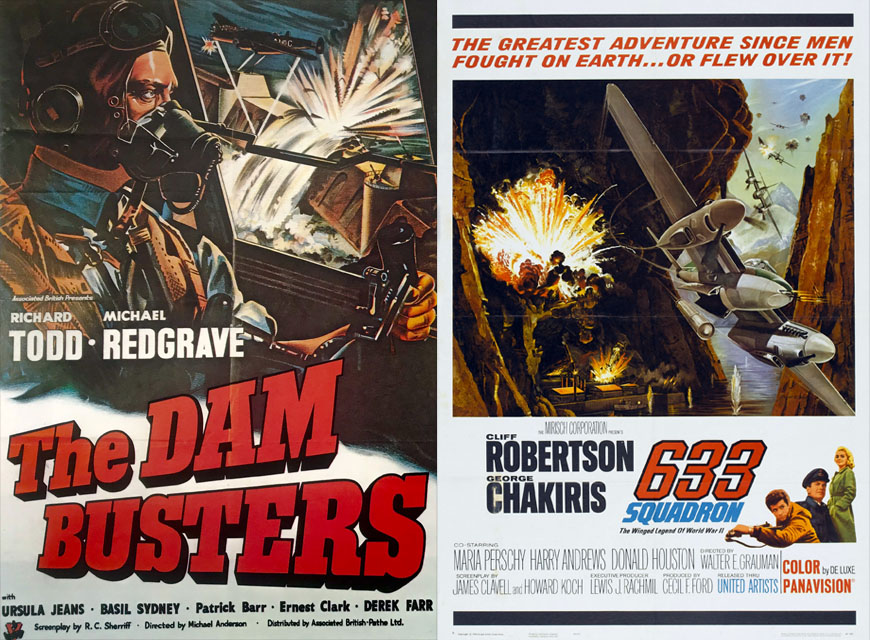
These two films are lumped together because they represent a time when good, clean, patriotic airplane films were made in the UK, using real airplanes and decent special effects. The number of Lancasters and Mosquitos available to the producers was limited, but in the case of “The Dam Busters,” some good wartime film footage was edited in. I’m sure anyone who knew “bouncing bomb” inventor Barnes Wallis in real life must have laughed a little at Michael Redgraves’ avuncular portrayal of him, but Richard Todd was perfect for the Guy Gibson role. In “633 Squadron,” Cliff Robertson did his usual fine job, no doubt enjoying the chance to be around the Mosquito.
B.T. notes that “At least one or two serial numbers are correct on the Lancs. When did Hollywood ever do that?” (Answer: Never ever.) D.H. adds a comment I wish I’d been smart enough to make: “’The Dam Busters’ is solid on just about every level, but what most impresses me about it is its determination to show and explain rather complex physics — and make it thrilling.” And regarding “633 Squadron,” B.T. laments: “They BURNED A MOSSIE! Apparently an airworthy one, at that.”
9. ‘The Bridges at Toko-Ri’ (1954)
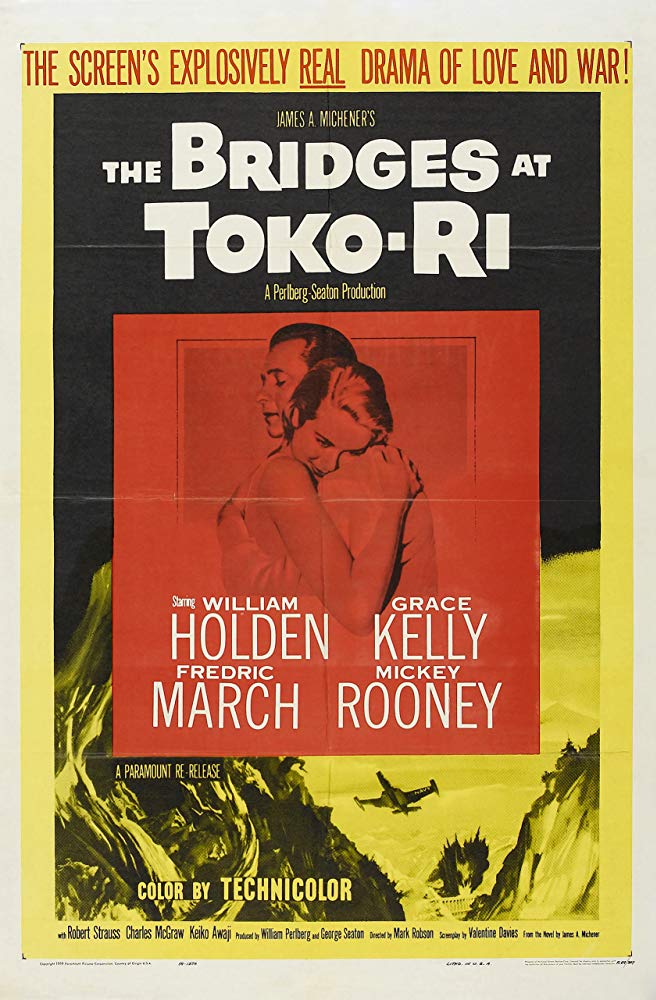
“Where do they get these men?” is, I believe, the question asked by Fredric March at the end of the film, and in a way this really defines the movie’s message. (D.H. agrees, commenting: “The conclusion of ‘The Bridges at Toko-Ri’ shocked audiences in 1954, and not simply because a big movie star ends up dead. What’s devastating is the sacrifice made by noncareer fliers who rise to the occasion and do great things when called.”) Operating jets off WWII-era carriers was tricky business at best, and doing it under the conditions prevailing in Korea made it even more difficult. While the movie doesn’t portray the accident rate as anything like it was at the time, it does convey the ever-present danger and the courage it took to make the really tough missions. William Holden does his angry man routine, but Mickey Rooney more than makes up for it with his portrayal of the helicopter pilot.
10. ‘The High and the Mighty’ (1954)
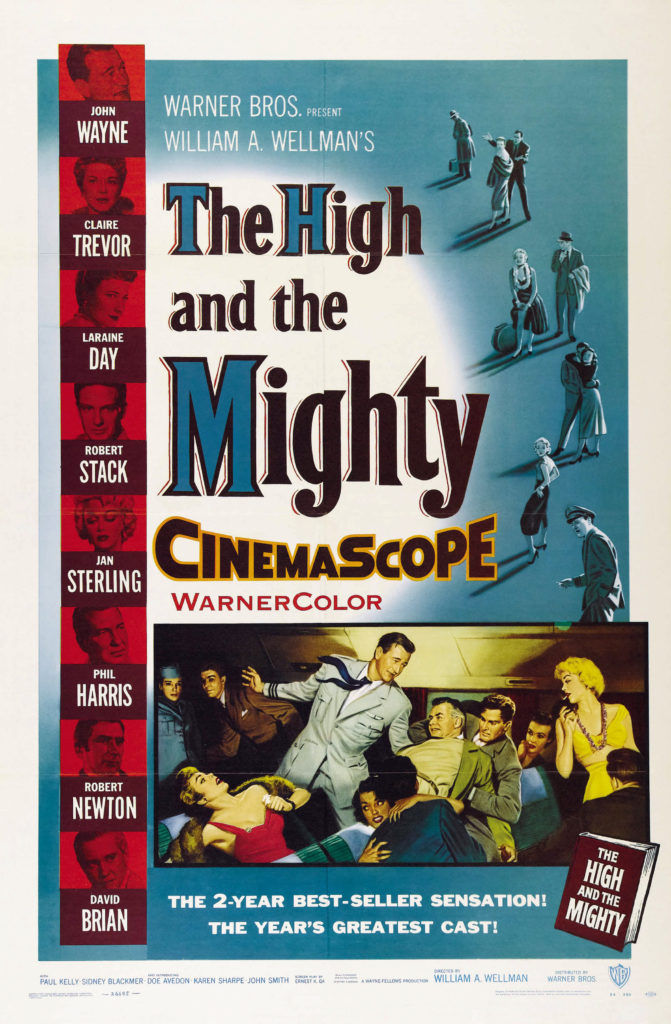
Another airplane film directed by William Wellman, with the great Ernest Gann authoring not only the book on which it is based but also the screenplay. The result is an aviation disaster film that represents the best of the genre. It has solid, if dated, acting by a good cast, and a believable ending that even Sully Sullenberger would approve of. B.T. comments: “I used to date a 737 driver. She said all the FOs loved the film because the co-pilot slugs the pilot and gets away with it.” D.H. notes that “The High and the Mighty finally made it to DVD in the last year or so, to great excitement in the movie buff community.”
And in a worthy coda to our top 10 list, B.T. points to the “Best aero flick not mentioned here: ‘Task Force’ (1949) with Gary Cooper, Walter Brennan, a Dauntless, a Wildcat and some surprisingly good detail.” Barrett is as usual correct, and it also really bothers me to have left out such excellent candidates as “Dive Bomber,” “I Wanted Wings,” “Dawn Patrol” and so many others.
The Worst Aviation movies of all time
1. ‘Top Gun’ (1986)
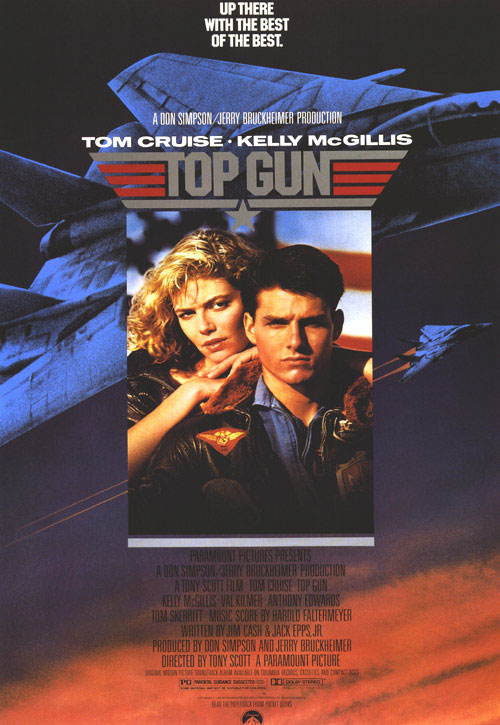
While it will offend many, my first choice for worst aviation film ever is “Top Gun,” starring the man who needed the biggest pillow available to reach the controls, Tom Cruise. I know that many are enamored of this film, and some fighter pilots even suggest that it is a true representation of the cocky fighter pilot spirit, but to me it was an embarrassing waste of time and money. The airplanes are gorgeous, but they are slavered over with the hot spittle of guys who think they are really cute in flying gear, especially when they have neato names. I cannot imagine that anyone of their ilk would be tolerated in any military unit. (I’m now donning my flak jacket to protect myself from the flying insults.) The irony of it is that “Hot Shots,” the spoof, is a far better film. I rest my case on the fact that an avowed fan of “Top Gun,” a naval aviator who should know better, is also a fan of the “Iron Eagle” series.
Editor’s update, 2022: And now there’s a sequel on its way:
2. ‘Firefox’ (1982)

Please don’t tell Clint Eastwood I said this, but it is easily the worst picture he ever made, and it also deals incidentally with aircraft. The plot is familiar — the retired expert recalled to do the one-in-a-million job that only he can do — and the imaginary airplane is not bad. But otherwise it is dull, predictable and without any redeeming actual aerial action.
3. ‘Jet Pilot’ (1957)
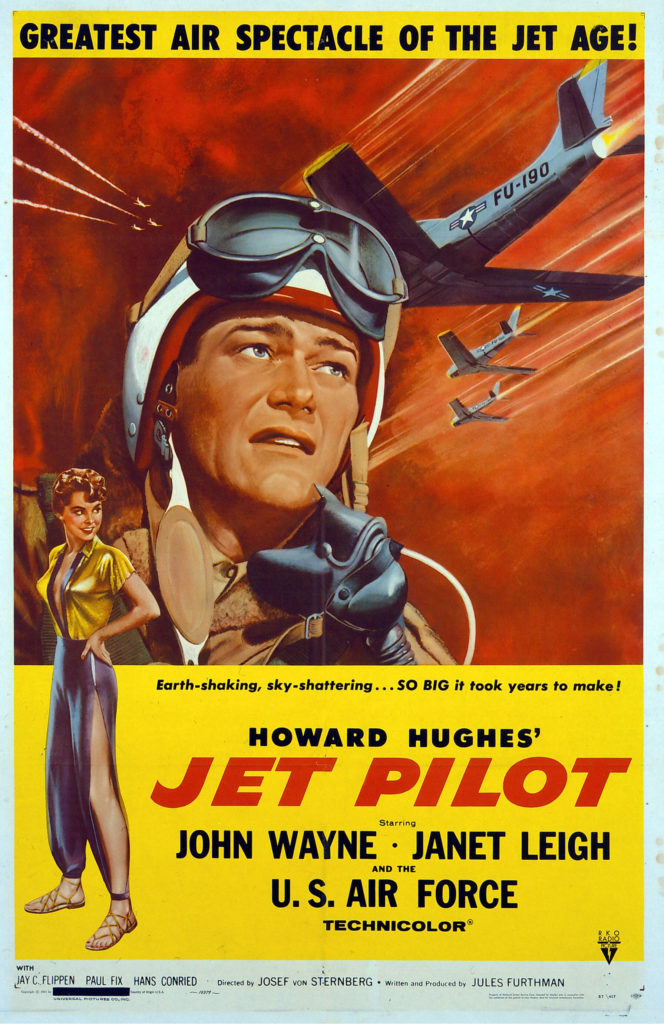
Howard Hughes and John Wayne were undoubtedly both ashamed of this mishmash of ideas, made over eight years with different airplanes. The end result was an agonizing, predictable bore. There are some pluses, including shots of a variety of aircraft such as the Northrop F-89, Republic F-84 and others. Reportedly Chuck Yeager did some of the aerobatic flying, which is also a plus. But beautiful Janet Leigh was somehow not convincing as a cold but nonetheless seductive communist pilot/spy.
4. ‘Stealth’ (2005)
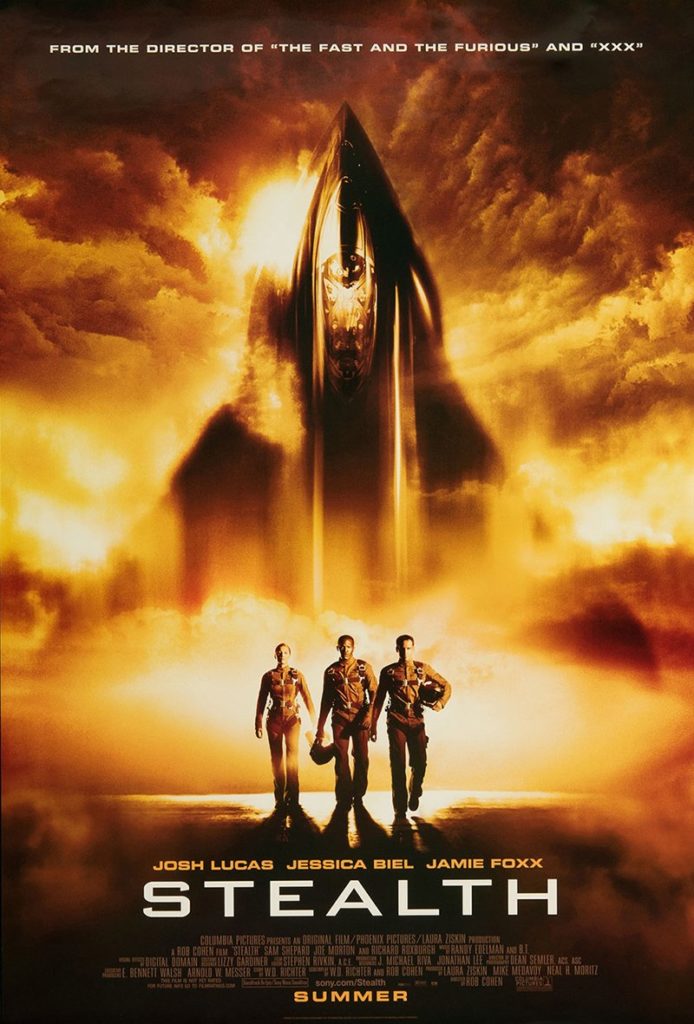
This film gained a great deal of buzz when photos of a “mystery Navy stealth fighter” were released on the Internet. The mock-up was really quite good and took many people in. The movie itself, however, is amazingly empty of anything but clichés.
5. ‘Midway’ (1976)

“Midway” is distinguished by having more changes to an airplane in the course of one sortie than any other picture. It is condemned by the completely phony love story that was stapled to it. Coming after 1970’s “Tora! Tora! Tora!” it was a real disappointment. Hal Holbrook plays the role of code-breaker Cmdr. Joseph Rochefort with such a broad Mark Twain accent that you expect the carriers to be stern-wheelers.
6. ‘Memphis Belle’ (1990)
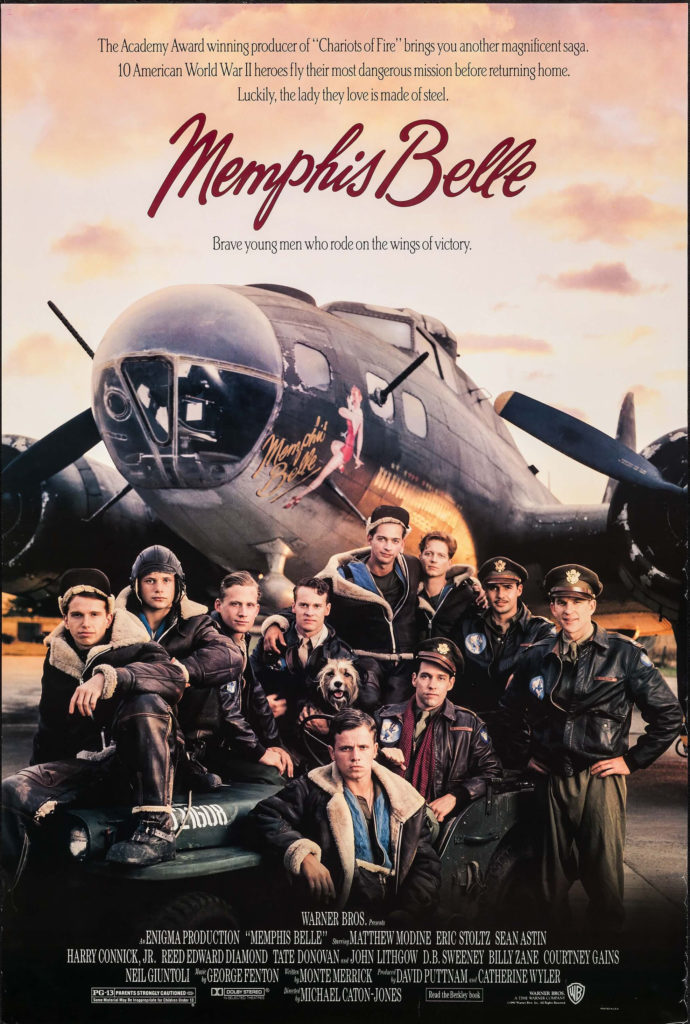
Probably the worst thing about this movie is the fact that William Wyler’s wartime documentary about the famous Flying Fortress was so good. While the movie hews generally to the original, “The Memphis Belle,” the actors’ looks and demeanor seem completely foreign to the time. Oddly enough, it has been well-reviewed, but any comparison of the original and this film sends this one to the bottom of the barrel.
7. ‘Snakes on a Plane’ (2006)

This one hardly needs explanation — utterly ghastly in all respects. One can only imagine the amount of cocaine consumed in its creation.
8. ‘Lafayette Escadrille’ (1958)
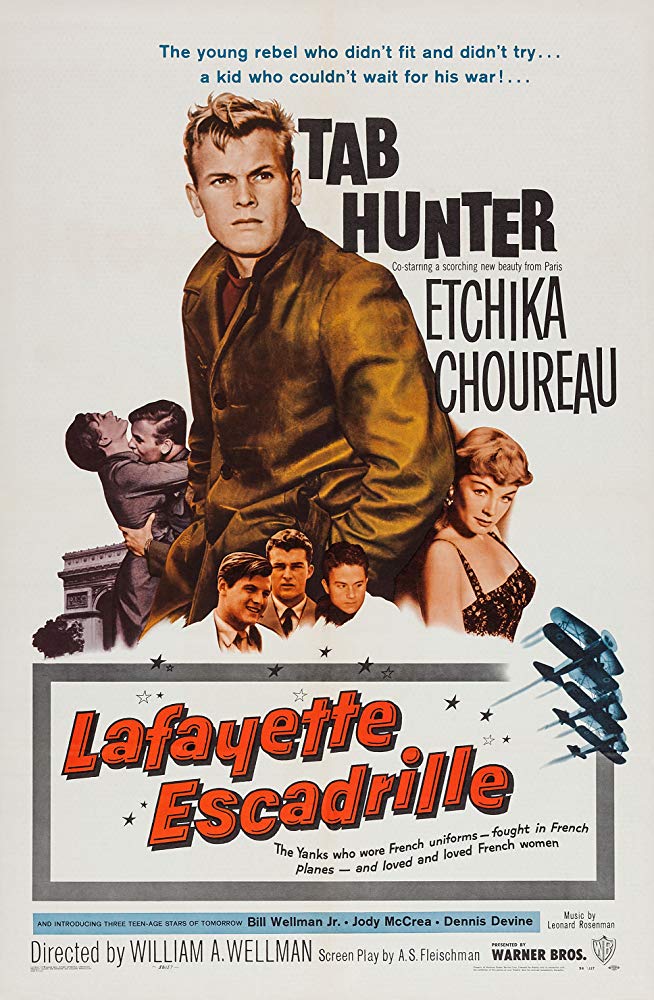
William Wellman betrayed his heritage with this turkey of a film, which — by his own admission — was totally unworthy of him. And pairing Tab Hunter with a pretend fighter plane is miscasting of the first order. Even if it’s about WWI aviation, it’s still terrible.
9. ‘Iron Eagle’ (1986) and its three sequels
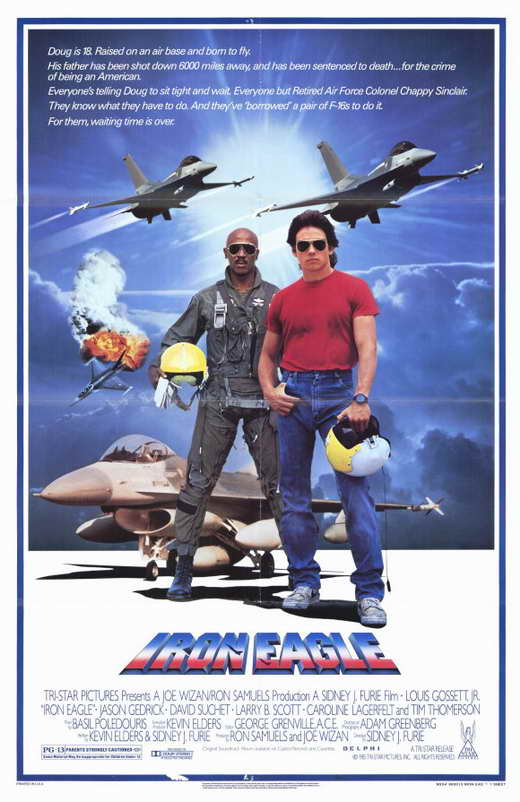
There are some nice airplanes in these films, quite a variety in fact, but the plot lines are so insulting that they make you dislike the people involved with the airplanes. A terrible waste of film, fuel and, if there had been any, talent.
10. ‘Pearl Harbor’ (2001)
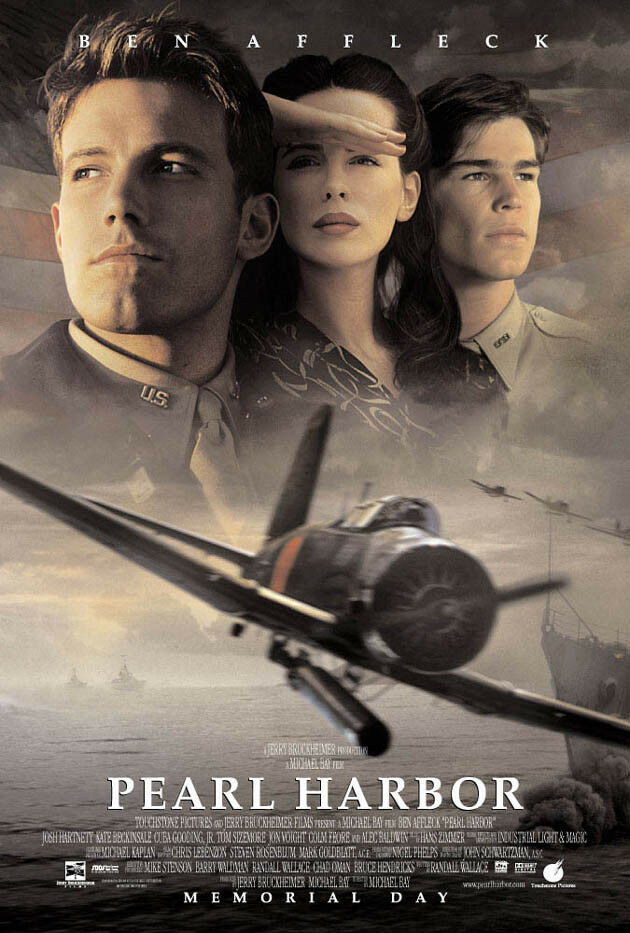
Despite the fact that there are airplanes in this movie, it is probably the worst aviation film ever made, with a startlingly wrong portrayal of the great Jimmy Doolittle by the loathsome Alec Baldwin being the most unforgivable of many errors. They spent so much money and had such a great opportunity to do something well. Instead they delivered this mishmash of bad performances, bad ideas and bad computer effects that condemn the film to the worst 10 of any list.
Bonus Badness!
J.R. comments that the “All-time worst aviation movie and possibly the worst movie ever made award has to go to ‘Interceptor’ — ridiculous plot, even more ridiculous ending. You had a little bit of everything — terrorists sliding down the inside of a refueling boom, fully politically correct crew on a C-5, a C-5 opening the front visor in flight, folding-wing F-117s that dogfight and launch air-to-air missiles. Watching this movie was like watching a train wreck; you couldn’t keep from NOT watching for fear of missing what was coming next.” I’ve had the good fortune not to see the film, so I couldn’t include it on the list, despite its obvious lack of merit.
So there you have it — one man’s opinion, for what it’s worth, on the 10 best and 10 worst aviation films ever.
historynet magazines
Our 9 best-selling history titles feature in-depth storytelling and iconic imagery to engage and inform on the people, the wars, and the events that shaped America and the world.


